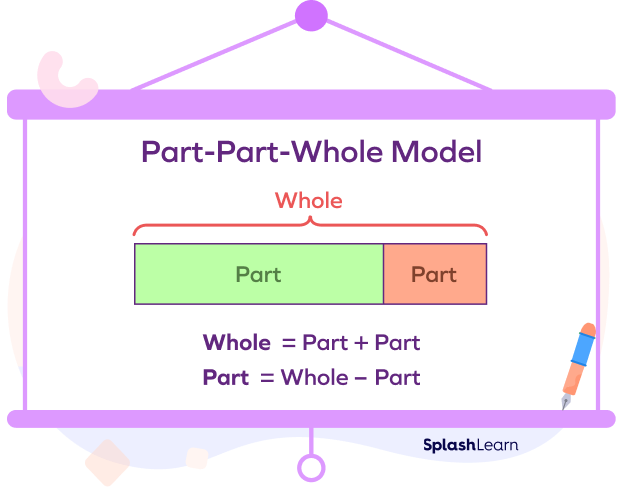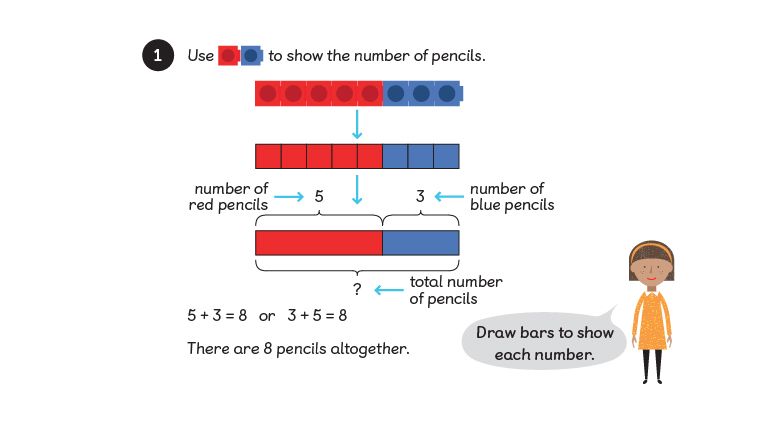Exploring Bar Model Illustration Techniques: A Comprehensive Overview to Envisioning Mathematics Concepts
Bar version drawing methods work as a beneficial resource for both instructors and trainees in imagining mathematical principles. These versions simplify complicated numerical connections, helping in the understanding of addition, multiplication, department, and reduction. This overview lays out reliable strategies for implementing bar designs, promoting active engagement and real-world connections. As visitors explore the useful applications and teaching pointers, they will certainly discover just how these techniques can change their technique to mathematics.
Understanding the Basics of Bar Design Illustration
Bar model drawing works as an effective aesthetic tool in mathematics, assisting in the understanding of numerical relationships and analytical techniques. This method entails representing numbers and their partnerships through rectangle-shaped bars, making it much easier to imagine procedures such as enhancement, department, subtraction, and reproduction. Each bar's length corresponds to a certain worth, permitting learners to compare quantities and understand proportions plainly.
To create a bar model, one starts by recognizing the trouble's vital aspects, often damaging it down right into components that can be visually represented. For instance, in an easy addition issue, two bars can be attracted, with their sizes representing the addends. The consolidated size shows the amount. In addition, bar models can be adjusted for more complex problems, consisting of ratios and portions, by adjusting the bars as necessary. Mastering these essentials lays a solid structure for effective analytical and deeper mathematical understanding.
Advantages of Making Use Of Bar Models in Mathematics
Making use of bar models in maths supplies many advantages that boost discovering and comprehension. These graphes aid trainees in comprehending intricate ideas by damaging them down right into manageable elements. Bar models supply a clear framework for highlighting connections between numbers, making abstract ideas more concrete. They promote a much deeper understanding of mathematical procedures and assist in analytical by allowing students to visualize the data they are dealing with.
Bar versions support the advancement of vital assuming abilities, as pupils need to assess and interpret the visual details to draw conclusions. This approach motivates active interaction with the material, strengthening retention and proficiency of mathematical concepts. By promoting a strong structure in visual proficiency, bar models encourage learners to approach different mathematical difficulties with confidence. On the whole, the combination of bar models into maths education proves advantageous in growing both understanding and logical capacities amongst pupils.
Applying Bar Versions to Enhancement and Subtraction
Bar versions offer as an effective device for aesthetically representing addition and reduction issues. By highlighting the connection between numbers, they improve understanding and promote analytic. In enhancement, real-life applications of these models can aid learners understand mathematical concepts in sensible contexts.
Representing Addition Visually
Visual aids can greatly improve their understanding of these operations when students come across enhancement and reduction troubles. Bar designs function as efficient tools for representing enhancement. By splitting a rectangle right into segments that represent the numbers entailed, pupils can visualize the connection in between the amounts. If a pupil requires to include 3 and 5, they can produce a bar separated right into two areas: one section standing for 3 and the other standing for 5. This clear representation not only simplifies the addition process yet also enhances the idea of integrating amounts. As trainees manipulate these visual aids, they develop a much deeper understanding of enhancement, causing improved problem-solving skills and higher self-confidence in their mathematical abilities.
Reduction With Bar Designs
Reduction is typically regarded as a more complex operation than addition, bar designs can properly clarify this process for pupils. By visually representing the quantities involved, pupils can better understand just how numbers relate to one an additional. In a bar model for reduction, one bar stands for the total amount, while another shows the amount being deducted. This aesthetic difference assists trainees comprehend the principle of "removing." If a bar shows 10 devices, and another bar representing 4 devices is gotten rid of, students can quickly see that 6 units remain. This method not just promotes understanding of subtraction but also aids in establishing analytical abilities, enabling pupils to picture their mathematical reasoning and enhance their overall comprehension of mathematical principles.
Real-Life Application Instances
Comprehending reduction via bar designs lays a structure for applying these techniques in real-life circumstances. In various contexts, such as budgeting or buying, people can visualize exactly how much money remains after expenses. If a person has $50 and invests $20, a bar model can stand for the total amount and the spent section, illustrating that $30 is left. Additionally, moms and dads can use bar versions to help youngsters understand the number of more products require to be included in complete a collection, such as having three apples and requiring five. This aesthetic representation streamlines complex troubles, facilitating understanding and retention. Ultimately, bar versions function as efficient tools in day-to-day decision-making, improving mathematical understanding in useful circumstances.
Imagining Reproduction and Department With Bar Designs
In checking out the application of bar versions for reproduction and department, it is vital to grasp their fundamental concepts. Building reproduction versions permits learners to imagine relationships in between numbers, while effective department techniques can be illustrated with these aesthetic help. This technique boosts comprehension and analytical skills in maths.
Recognizing Bar Versions
Bar designs function as an effective aesthetic device for illustrating the concepts of multiplication and division. They make it possible for students to represent mathematical partnerships in an organized layout, facilitating a much deeper understanding of these procedures. In multiplication, bar versions show groups of equal size, permitting people to imagine the complete amount when integrating these teams. Conversely, in department, bar models aid depict just how a total is divided right into smaller sized, equivalent parts, making clear the principle of partitioning. By employing these visual aids, pupils can comprehend the underlying concepts of multiplication and department better. This method not just improves comprehension yet additionally supports analytical abilities, making bar designs an indispensable possession in mathematical education and learning.
Building Reproduction Designs
Constructing multiplication designs making use of bar representations uses a clear technique for imagining the process of multiplication. These versions make it possible for learners to stand for reproduction as groups of equivalent parts, making abstract concepts extra concrete. For instance, to illustrate (3 times 4), a student can draw one bar split right into three equal sectors, each representing 4 systems. In addition, creating a 2nd bar with the same size reinforces the understanding of duplicated addition, as each section matches to one group. This visual representation not only help in grasping multiplication but additionally enhances analytic skills. By utilizing bar models, students can better understand connections between numbers and develop a durable structure for more complex mathematical concepts, leading to boosted self-confidence in their abilities.
Picturing Division Approaches

Resolving Word Problems Utilizing Bar Model Techniques

For instance, in a problem entailing addition and reduction, pupils can draw separate bars for each quantity and then manipulate them to discover the remedy. This procedure not just clarifies the trouble but likewise cultivates a deeper conceptual understanding. Bar versions can be adapted for various types of word problems, making them versatile throughout various mathematical subjects. Inevitably, utilizing bar models can significantly improve students' problem-solving abilities by providing a clear aesthetic path to reach the right response.
Integrating Bar Designs in Different Math Topics
Bar designs can be effortlessly integrated into numerous mathematics subjects, improving trainees' understanding of ideas beyond basic arithmetic. In algebra, these aesthetic devices aid in standing for equations and inequalities, enabling students to envision connections in between variables. When taking on geometry, bar models can highlight the buildings of forms and spatial thinking, assisting pupils understand concepts like area and boundary properly. In statistics, bar models facilitate the interpretation of data sets, permitting pupils to contrast amounts and acknowledge patterns aesthetically. Additionally, incorporating bar versions within dimension topics aids in recognizing devices and conversions by giving a concrete depiction of quantities. By utilizing bar models throughout different mathematical areas, teachers can cultivate a deeper comprehension of complicated ideas, consequently enhancing analytic skills and promoting crucial thinking (bar model drawing techniques). This versatility demonstrates the utility of bar models as a foundational tool for students in their mathematical trip
Tips for Training Bar Versions Efficiently
Incorporating bar designs right into training practices requires thoughtful methods to maximize their performance. Educators needs to start by presenting bar designs with easy, relatable instances that students can conveniently comprehend. This aids to construct confidence and experience with the principle. Progressively enhancing the intricacy of troubles enables students to apply their abilities progressively. Furthermore, educators need to urge students to create their own bar designs, promoting energetic involvement and possession of their learning.
Integrating joint tasks can likewise enhance understanding, as trainees review and solve troubles in teams. Constant responses is necessary; educators ought to supply positive discourse on trainees' bar design depictions to assist renovation. Lastly, attaching bar designs to real-life situations enhances their importance, aiding students see the sensible applications of their mathematical abilities. By applying these approaches, teachers more info can successfully harness the power of bar versions in their mathematics guideline.
Frequently Asked Concerns
Can Bar Models Be Made Use Of in Other Subjects Besides Mathematics?
Bar versions can undoubtedly be utilized in various topics beyond mathematics. They properly highlight ideas in science, social research studies, and language arts, helping to aesthetically represent partnerships, processes, and ideas for enhanced understanding across techniques.
What Age Team Is Best Matched for Learning Bar Designs?
Bar models are best suited for kids ages 7 to 12, as they develop concrete thinking skills throughout this duration (bar model drawing techniques). At this age, students can successfully comprehend abstract ideas with graph and analytic techniques
Exist Digital Tools for Creating Bar Designs?

How Can I Evaluate Pupil Recognizing of Bar Models?
Examining pupil understanding of bar designs can include tests, observational assessments, and seminar. Teachers might also evaluate pupils' finished designs and their ability to describe their reasoning, guaranteeing an extensive examination of understanding.
What Are Usual Mistakes When Using Bar Models?
Typical errors when using bar models include misrepresenting amounts, stopping working to accurately identify bars, puzzling enhancement and reduction, overlooking to utilize regular ranges, and ignoring the value of clear visual splitting up between various aspects.
In addition, bar designs can be adapted for much more complex issues, including portions and proportions, by readjusting the bars as necessary. Subtraction is usually perceived as a much more complex procedure than addition, bar versions can properly clarify this process for trainees. In a bar design for subtraction, one bar stands for the total amount, while an additional shows the amount being subtracted. If a bar reveals 10 systems, and an additional bar representing 4 units is removed, students can easily see that 6 devices stay. When splitting an overall into equal groups, students can draw a long bar to represent the whole and then sector it into smaller bars that indicate each group.